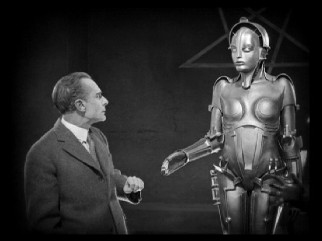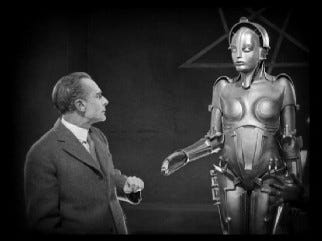March 11, 2015


Scene from Fritz Lang
In 1927, Fritz Lang's avante garde film Metropolis gave voice to the then-popular fear of advanced technology gone mad-molding humans into automatons. It was a common fear of people growing up in an industrial age who did not yet know what was possible through automation, and what the limitations were.
Now, people generally have a much more comfortable relationship with advanced technology. We no longer worry that automated machines will force us to behave like automatons. We now realize that automated machines replace people who act like automatons. If you can't provide that unique adaptive/creative spark that allows humans to rise above automatons--baby, you're out of a job.
The issue for the New Metropolis is how to give automated systems the flexibility and adaptability needed to serve their human masters. How can machines be made to understand their physical surroundings well enough to perform the tasks we set for them?
The answer will be sensibility. The process starts with sensors-transducers like machine vision cameras-that collect data about the outside world. The data then pass through interpretive computer systems capable of extracting information about what's really going on. The loop closes through control systems that guide the mechanism in making actions needed to complete the task.
This blog will focus on solutions that automation experts are developing to give our technical systems this sensibility.
For example, Jim Anderson, a product manager for vision-system manufacturer SICK Inc., points out that the three most common packaging-inspection problems are closure problems (e.g.; missing caps on bottles); misapplied labels (e.g., pasted on crooked or out of place); and incorrect labels.
In the past, developing a solution to automatically inspect for these problems required expensive high-performance hardware, difficult-to-program general-purpose software, and the services of a machine-vision expert to put it all together.
Recently, special-purpose "vision sensors" have come on the market that were developed as solutions for such specific tasks. The idea seems to be similar to RISC (reduced instruction set computing) processors. By designing the system for a specific, limited task, it is possible to produce a solution that does that task faster, better, and less expensively.
The company's Piranha 4 vision sensor is thereby able to use less expensive hardware because the problem characteristics allow for lower camera resolution. The software is simplified because only a subset of image-processing functions are needed. The programming interface is easier to use because the actions needed are clearly predefined. To program the device, the engineer need only select the options wanted and specify the region of interest. The system "learns" what to expect by viewing known-good examples. If inspection targets vary too much from these known-good examples, the system knows to reject them.
This is an example of how automation developers are creating advanced systems that adapt to working with humans, rather than requiring humans to adapt to them.

C.G Masi
C.G. Masi has been blogging about technology and society since 2006. In a career spanning more than a quarter century, he has written more than 400 articles for scholarly and technical journals, and six novels dealing with automation's place in technically advanced society. For more information, visit www.cgmasi.com..
About the Author(s)
You May Also Like


